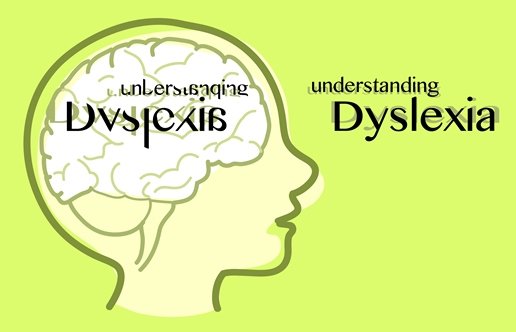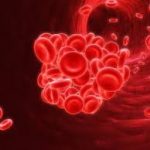
Dr. Maxwell Nartey
Professor of Symptometric Science, American School of Symptometry, NFP
World Center for Health Education & Scientific Enlightenment
Millions of children all over the world have dyslexia. What is dyslexia?
It is a congenital reading disorder caused by a defective reading mechanism. Most of us who read because we did not have any difficulty learning to read, take reading for granted, and if a child is finding it difficult to read, some school children tend to make fun of him or her. It is time to understand how the reading and comprehension mechanism operates in a person.
It is neurons that activate and operate the reading and comprehension mechanism in a person. These neurons are in the association areas of the parietal lobe. Neurons are the cells that do not divide. After performing their tasks, they fizzle.
Before a person decides to read a book, a letter, an email, a newspaper, etc., they rely on their reading mechanism to facilitate the reading process. In order to fully understand what is happening to a dyslexic, I would first describe what happens when the reading mechanism is activated in a regular person.
Light shines on what the person intends to read. The stimuli from the words are picked up by the eyes and they are transmitted to the association areas of the parietal lobe. The neurons in the association areas put together the letters to produce a monosyllabic, a disyllabic or a polysyllabic word. There are stand-alone words, and there are words that are in a sentence within a short paragraph or a long paragraph.
A second set of neurons give meaning to the word based on the vocabulary that is in the memory section of the hippocampus. A third set of neurons facilitate the understanding of the word or the sentence. The fourth set of neurons facilitate the comprehension of what was read.
At an advanced stage, a fifth set of neurons will facilitate the analysis of what was read. This is how neuronal connectivity facilitates the average person’s reading, comprehension and analysis of a text.
A dyslexic faces two major problems: 1) they are not producing enough neurons and 2) their neurons for reading and comprehension do not have enough energy for neuronal connectivity. Why? The answer is, they were born with a defective reading mechanism.
When the neurons in a defective reading mechanism are trying to read polysyllabic words like “representative, motorboat, agreement,” etc., or complex words like “phlegmatic, monosaccharides, and polycyclic,” etc., it looks like part of the word has been cut off.
Sometimes, letter substitution takes place. For example, letter “O” in the word “Pot” seems to have been replaced with letter “A”, as in “Pat”. As a result, the dyslexic has to take their time to figure out what the word really is, and what it means.
Additionally, the dyslexic’s association neurons and memory neurons are so weak that they cannot differentiate words that share a similar sound but have a different meaning like, “Were and where”, “There and their”, “Pair and per”. These neuronal struggles cause hesitancy. It is hesitancy that causes lack of self-confidence when a dyslexic is trying to read like the average person.
What makes matters worse for many dyslexics is, 1) the letters in the words start to move backwards or they are jumping 2) the syllable that seemed to have been cut off is reattached, and 3) only part of the next word can be seen.
There have been instances where words ran into each other like a train, thereby making it extremely difficult for the dyslexic to read.
What some dyslexics did to strengthen their audio/visual association neurons was, they went into a separate room or to a beach, and they read paragraphs aloud. Then, they read the same words over and over for hours. This was how they devised a method to match the sound of certain words with their spelling, thereby improving their audio/visual word connections and associations.
Unfortunately, the dyslexic’s problem is not only about reading. It is also about writing.
When most dyslexics are writing, their inability to see each word in its entirety makes them to commit the kind of spelling and grammatical errors that the average person would have easily spotted and corrected. This may explain why, many dyslexics prefer to talk on the phone than to send an email, a text message, or write an essay or a letter. Some have characterized this inability to read and write as dyslexic illiteracy. I totally disagree. Here is why.
Dyslexia is one of the reading disorders. Therefore, it is a diagnosable congenital disease. Illiteracy is not a reading disorder. It is a person’s inability to read and write due to non-schooling.
What causes dyslexia?
In a regular person, the reading mechanism, the eye coordination mechanism, and the eye reflexes are built into the occipital lobe, and the parietal lobe. If bacteria are not in the amniotic fluid, the trophoblast will start to produce the baby’s eyes in the seventh week; and by the end of the tenth week, the baby’s eyes and reading mechanism have fully developed.
In dyslexics, their reading mechanism is work in progress even after birth; and still, 12 years after birth, the construction of the reading mechanism is not complete. The question is why?
The answer is, the baby produced a faulty reading mechanism because their mothers did not help them to produce enough matrix and neurons. There were enough cells to produce the baby’s cornea, iris, pupil, lens, retina, etc., but there was not enough matrix to manufacture the base of the baby’s reading mechanism. Then, the baby’s brain could not produce enough neurons for its different association areas.
The question is, is this the mother’s fault? Not necessarily.
Pregnant women are not taught how to produce a matrix for themselves and for their babies. Also, most of them do not know what neurons do, and how to produce them. In truth, they have never heard of the word, “Neuron”.
It is the toxin of bacteria that causes dyslexia.
Where did these bacteria come from? There are three ways that bacteria get into the amniotic fluid: 1) the mother drank a beverage that had bacteria in it 2) the mother ate food that had bacteria in it and 3) the mother ate food that gave spontaneous existence to bacteria in the amniotic fluid.
I am not concerned about the airborne bacteria that coat our foods before we chew and swallow them. I am more concerned about the foods that give spontaneous existence to bacteria in the amniotic fluid. Listeria monocytogenes is one of them.
Listeria can cause blindness in the baby. If it does not cause blindness it may cause squinting or dyslexia. There are documented instances where Listeria caused stillbirth and other serious damage to the fetus. (Read Microbiology, An Introduction, 5th edition, by Tortora, Funke and Case, page 285, and page 541).
It is for the above reasons that Symptometry does not recommend certain foods to pregnant women.
The following celebrities were born dyslexic: Richard Branson, Tom Cruise, Leonardo Da Vinci, Walt Disney, Jim Carrey, Danny Glover, Jay Leno, Keanu Reeves, Whoopi Goldberg, Salma Hayek, and Albert Einstein.
How did they overcome dyslexia to become the celebrities that they are, or in the case of Albert Einstein, the celebrity that he was? Here is what they did.
They created a different way to read monosyllabic words, disyllabic words, polysyllabic words and complex words until some of them started producing neurons to 1) read like regular individuals and 2) comprehend what they were reading.
Also, they were able to get over the trauma associated with lack of self-confidence. Briefly stated, they reinvented themselves, and they survived the ordeal.
Many states in the US have redefined dyslexia as a form of developmental delay. This is why a budget is set aside every year to fund the training of special dyslexia education teachers. Thanks to this program, a few of the dyslexics are able to reach their full reading potential.
Now that we know the root cause of dyslexia, why not prevent it through Symptometry’s pregnancy management program? It is all about producing neurons. If a person could not produce neurons when they were in their mother’s womb, it is not too late to help them to produce neurons now for reading, comprehension, and analysis.
Special education teachers would be the first individuals to admit that some dyslexic students are slower than others. This means the slower ones have more problems, the worst being lack of self-confidence.
Symptometry has had some successes in helping dyslexics improve their reading and comprehension skills, and this is important because it increases the dyslexic’s chances of overcoming their severest form of dyslexia.
The truth is, jobs for individuals who can neither read nor write are disappearing fast. This is because employers will not hire individuals who cannot read instructions to operate a piece of equipment, and write a note.
Therefore, in addition to special education, the dyslexic must have some extra help to overcome their disability.
© Copyright 2021, The American School of Symptometry, NFP. No part of this publication may be reproduced or transmitted in any form or by any means, electronic or mechanical, including photocopying, recording, or by any information storage and retrieval system without the written permission of The American School of Symptometry, NFP. Library of Congress copyright number Txu 1-621-370, Washington D.C


 Previous Post
Previous Post Next Post
Next Post